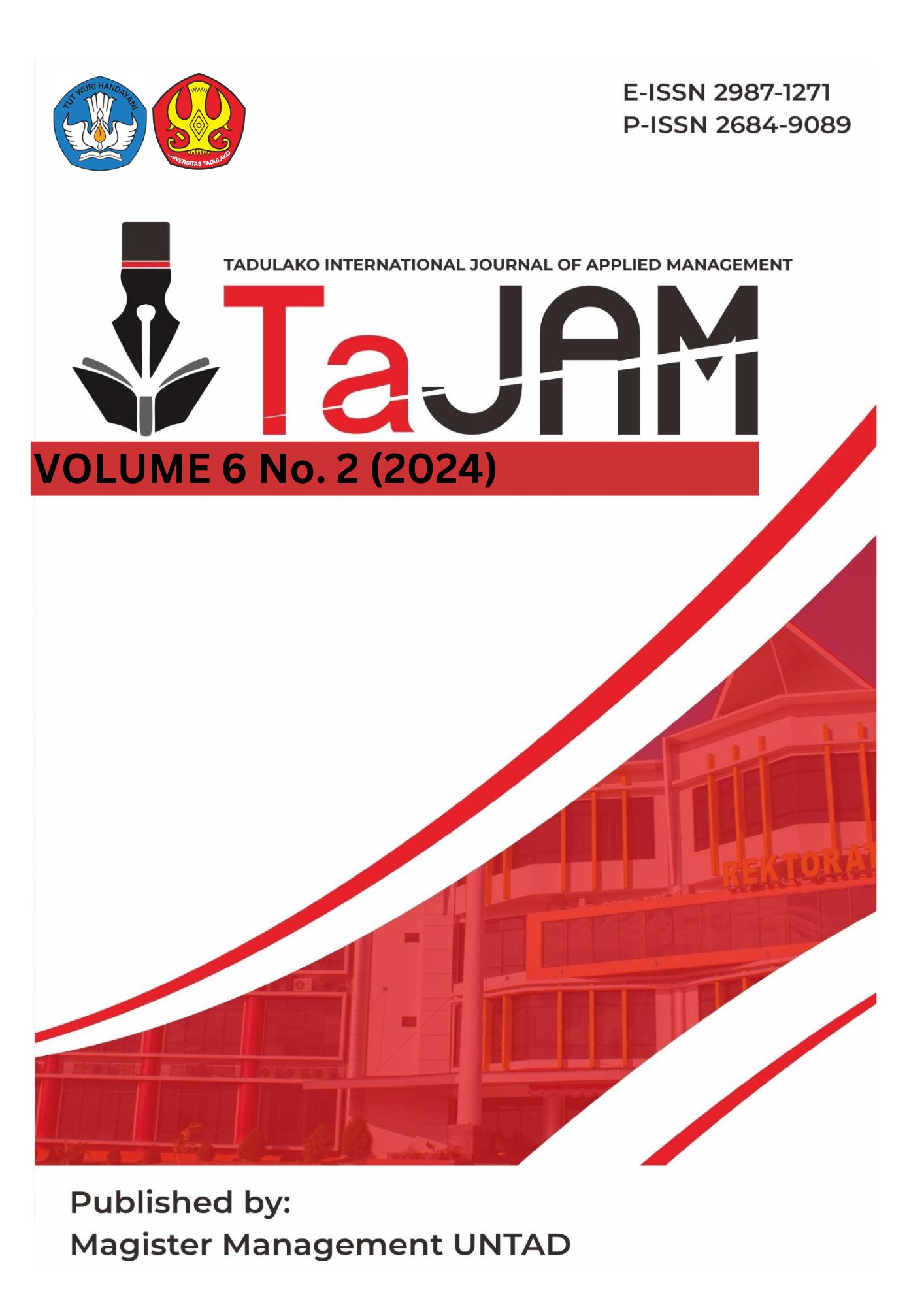THE INFLUENCE OF LEADERSHIP ON NURSE MOTIVATION THROUGH WORKLOAD AS AN INTERVENING VARIABLE AT UNDATA HOSPITAL
DOI:
https://doi.org/10.59769/tajam.v6i2.129Keywords:
Leadership, Motivation, WorkloadAbstract
This study aims to determine and analyze the influence directly or indirectly (Intervening) of Leadership on Nurse Motivation, and Workload as an intermediate variable. The population consists of 376 nurses at Undata Hospital in Palu City. Of the 376 populations sampled in this study, 194. This research is descriptive and will be analyzed by Structural Equation Model-Partial Least Square (SEM-PLS) analysis. The results showed that (1) Leadership has a direct influence on the Motivation of Undata Hospital Nurses. This is evidenced by the t-count value of 5.198 with a significance value of 0.000 < 0.05, the path coefficient has a positive value of 0.496; (2) the Leadership variable has a direct influence on the Workload of Undata Hospital nurses t-count value of 14.417 with a significance value of 0.000 < 0.05, the path coefficient has a positive value of 0.765 and (3) the Workload variable has a direct influence on the motivation of Undata Hospital nurses has a t-count value of 4.952 with a significance value of 0.000 < 0.05, the path coefficient has a positive value of 0.409. (4) for the indirect influence of leadership variables on motivation through the workload of Undata Hospital nurses has a t-count value of 4.834 with a significance value of 0.000 < 0.05, indirect effects coefficient has a positive value of 0.313.
References
Cahyani M. L., Elfiswandi dan Lusiana. 2022. Pengaruh Kepemimpinan Dan Beban Kerja Terhadap Kinerja Pegawai Dengan Motivasi Sebagai Variabel Intervening. Journal of Business and Economics (JBE) UPI YPTK, Vol. 7(1), p 26-32.
Ghozali, Imam. 2013. A Structural Equation Modeling Metode Alternatif dengan. Partial Least Square (PLS). Edisi Keempat. Semarang: Badan Universitas Diponegoro.
Gorda, I Gusti Ngurah. 2010. Manajemen Sumber Daya Manusia. Cetakan Ketiga. Denpasar : Astabrata Bali.
Hancock, P.A & Meshkati, N. 1988. Human Mental Workload. Elsevier Science Publisher B.V : Netherlands.
Handoko, T. Hani. 2011. Manajemen Personalia dan Sumber Daya Manusia. Yogyakarta: Penerbit BPFE.
House, Robert J; Hanges, P. J; Quintanilla, S.A; Dorfman, P.W; Javidan, M; Dickson, M; Gupta, V. 2006. Cultural Influences On Leadership And Organization: Project Globe. The Globe Foundation.
Hulu J. M., Progresif Buulolo, dan Anskaria S. Gohae. 2021. Pengaruh Kepemimpinan dan Kompensasi Terhadap Motivasi Kerja Pegawai Di Kantor Camat Mazo Kabupaten Nias Selatan. Jurnal Ilmiah Mahasiwa Nias Selatan, Volume 4, Nomor 2, Hal. 36-45, ISSN: 2614-381X.
Husein Umar. 2013. Metode Penelitian Untuk Skripsi dan Tesis. Jakarta: Rajawali
Jurkeiwicz, Massey. 2001. Motivation in Public and Private Organization: A Comparative Study”, Public Productivity and Management Review, Vol. 21, No. 3.
Rachmawati, E. 2008. Persen Perawat Alami Stress. Kompas Cyber Media.
Robbins, Stephen. P. 2006. Perilaku organisasi. Edisi Bahasa Indonesia. PT Indeks Kelompok Gramedia. Jakarta.
Sugiyono. 2017. Metode Penelitian Kuantitatif, Kualitatif dan R&D. Bandung: Alfabeta.
Supardi dan Anwar. 2002. Pendekatan SDM dan Organisasi Terhadap Pembinaan Pegawai. Jakarta : Gunung Agung.
Trisya Yona Febrina, Zulkarnain Edward, dan Nurhafizah Nasution. 2020. Hubungan Beban Kerja Dengan Kinerja Perawat Di Instalasi Rawat Inap Rumah Sakit Harapan Bunda Kota Batam. Jurnal Kesehatan Saelmakers PERDANA, V0l. 3(2), p 316-326.
Yukl, G. A. 2005. Leadership in Organizationals, 4 Ed. Prince Hall, Upper Saddle River, NJ.





